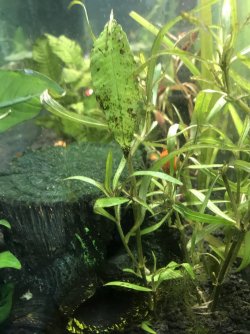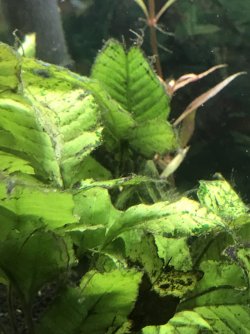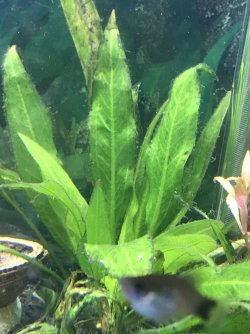This is fairly easy to resolve. First, you have Java Ferns and I think Anubias (?) which are low light and low nutrient requiring plants. They certainly do not need carbon from the toxic Excel which is glutaraldehyde (if you read up on this you will find it will kill some plants when used at recommended dose, but if overdosed can kill plants, bacteria and fish). The Echinodorus sword would greatly benefit from substrate tabs (but not osmocote, will come back to this).
The light may be too intense, or on for too long each day; floating plants can help with the intensity, and obviously reducing the photoperiod is an easy option.
Osmocote should never be added to an aquarium. Substrate fertilizers will not directly benefit plants like Java Fern that are not rooted in the substrate. But even more importantly, osmocote contains nutrient levels that benefit terrestrial plants, but not aquatic. The high (very) level of nitrogen (as nitrate) and phosphorus is known to cause algae, but these are not needed in an aquarium with fish. Aquatic plants do not take up nitrate, and there is plenty of ammonia/ammonium to supply their nitrogen need (especially here with these slow growers), and sufficient phosphates from feeding the fish.
You may or may not benefit from using Flourish Comprehensive, I have had Java Ferns and mosses do fairly well without it (and in my very soft water) but they do tend to perk up a bit with it. Depends upon the fish load, feeding, and source water. Will be more likiely to benefit the sword, but the Flourish Tab may be sufficient, certainly these would benefit the sword.





